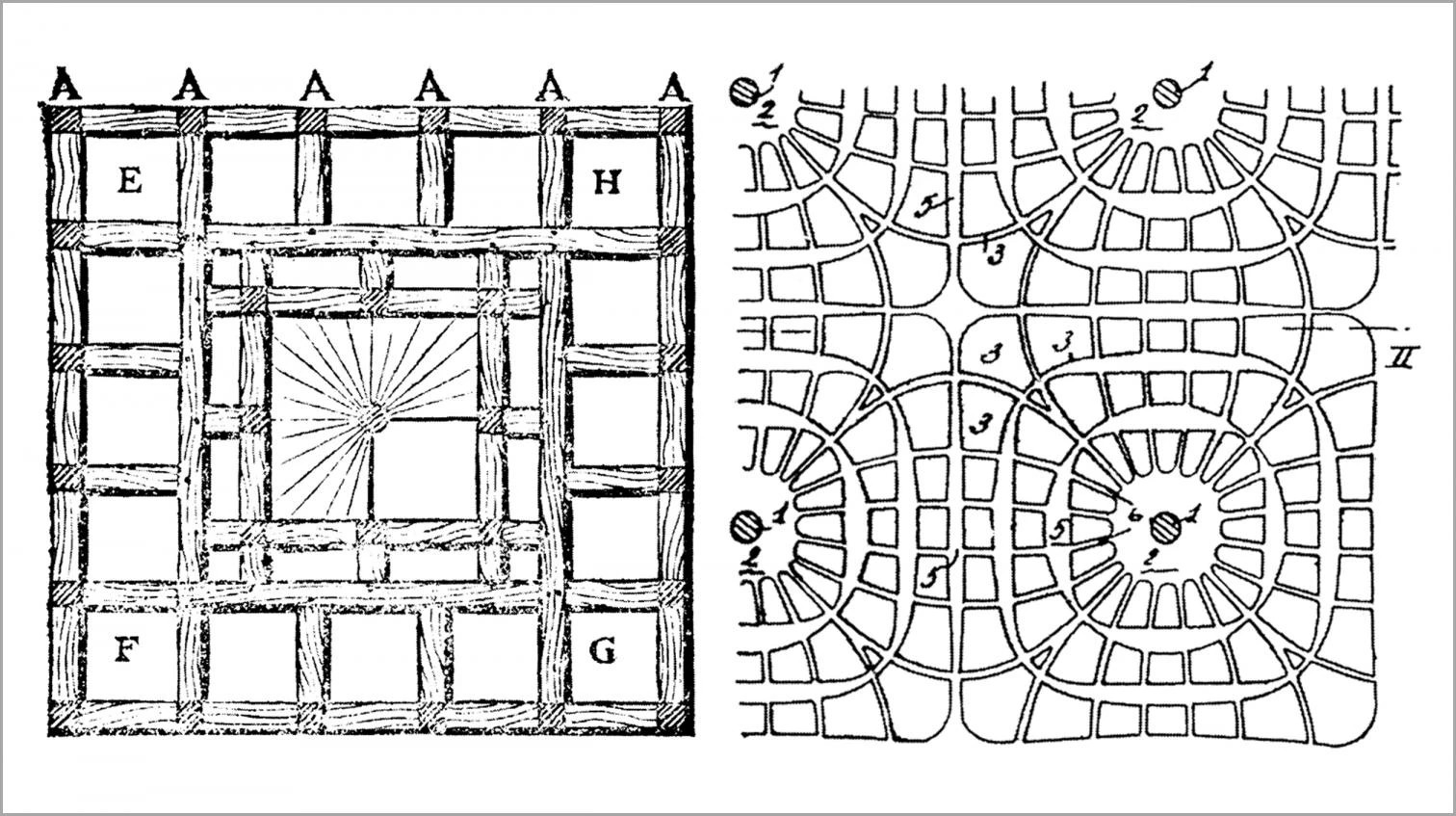
“Civilization is measured by the shape of your ceiling.” This quote from Louis I. Kahn in English, along with another from Le Corbusier in French (which relates the lower side of slabs to the principle of the open plan), kicks off this volume on the history of horizontal structures, published precisely in these two languages, though most of its ninety-five authors – and the editor himself, Roberto Gargiani – happen to be Italian. Forty of them have been translated into French, as could be expected in an editorial project conceived and carried out in French-speaking Lausanne, while all the articles originally written in English are left untranslated. This is the case of some of the texts by Spanish experts, such as the very interesting one by Pepa Cassinello on the influence of seismic risks on the geographic distribution of Gothic cathedrals in the Iberian Peninsula – the greater rigidity provided by spandrel walls make the flat roof type preferable in the Mediterranean regions and in Andalusia – or the excellent essay by Santiago Huerta on the structural analysis of plate-bandes (flat arches or lintel arches) from 1700 to the contemporary contributions of Jacques Heyman, who is also in the book.
Among the contributors are scholars as important as Tim Benton, Bernard Cache, Kenneth Frampton, Franz Graf, Alain Guiheux, Bruno Marchand, Ákos Moravánszky, Bruno Reichlin or Panagiotis Tournikionis, but readers would have appreciated a short biographical note on everyone, in order to locate the academic whereabouts of the ones less known. In any case the volume has a scope that goes beyond that of specialists in the history of construction; almost half of its 900 pages are devoted to the 19th and 20th centuries, exploring – from the angle of details or the materiality of the structure – various episodes that most architects are familiar with, or recent projects such as those of Rem Koolhaas in his relationship with Parent and Virilio – written by Gargiani, who is also the author of a book on the Dutch architect – or the Rolex Center of SANAA, located in the same EPF Lausanne campus where this fine publication has come into being.
The second volume of a ‘nouvelle histoire de la construction’ whose first one was La colonne (mentioned in this section not long ago – ‘Poéticas del hormigón’, Arquitectura Viva 143, p. 79 – alongside other texts by Gargiani, his brilliant Histoire de l’architecture moderne, co-written with Giovanni Fanelli, and especially his inspiring Le Corbusier: Béton Brut and Ineffable Space 1940-1965, with Anna Rossellini, the last chronological volume and the first to appear of a trilogy on the master), this monumental work coordinated by the Lausanne professor deserves only praise. But it must be mentioned that the number and quality of the illustrations is in many articles insufficient (rendering some difficult to understand, such as the one by José Carlos Palacios on the fascinating muqarnas in Islamic architecture), and that the section on contemporary architecture has errors that more meticulous editing would have avoided. But none of this diminishes the merits of a work that is an exemplary exposé of how ‘civilization is measured by the shape of your ceiling’.






